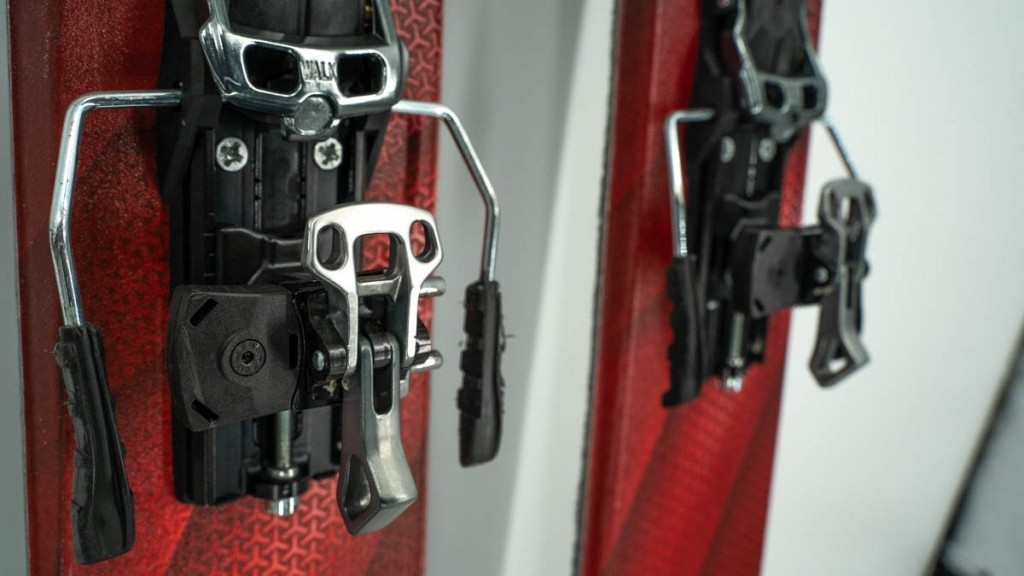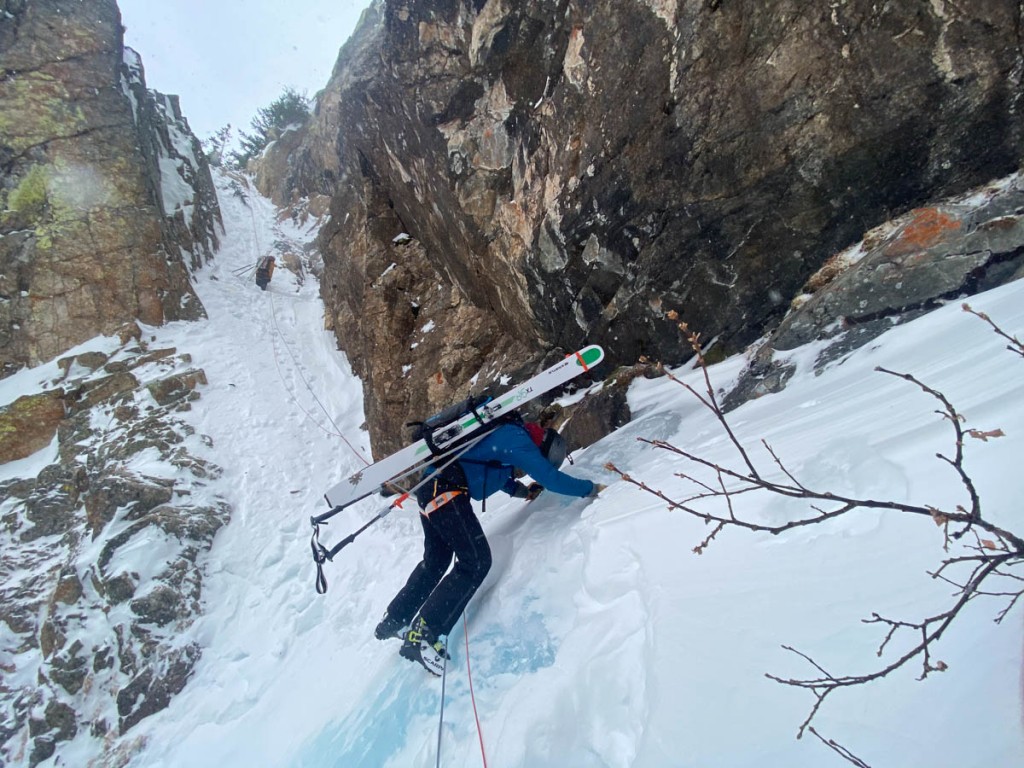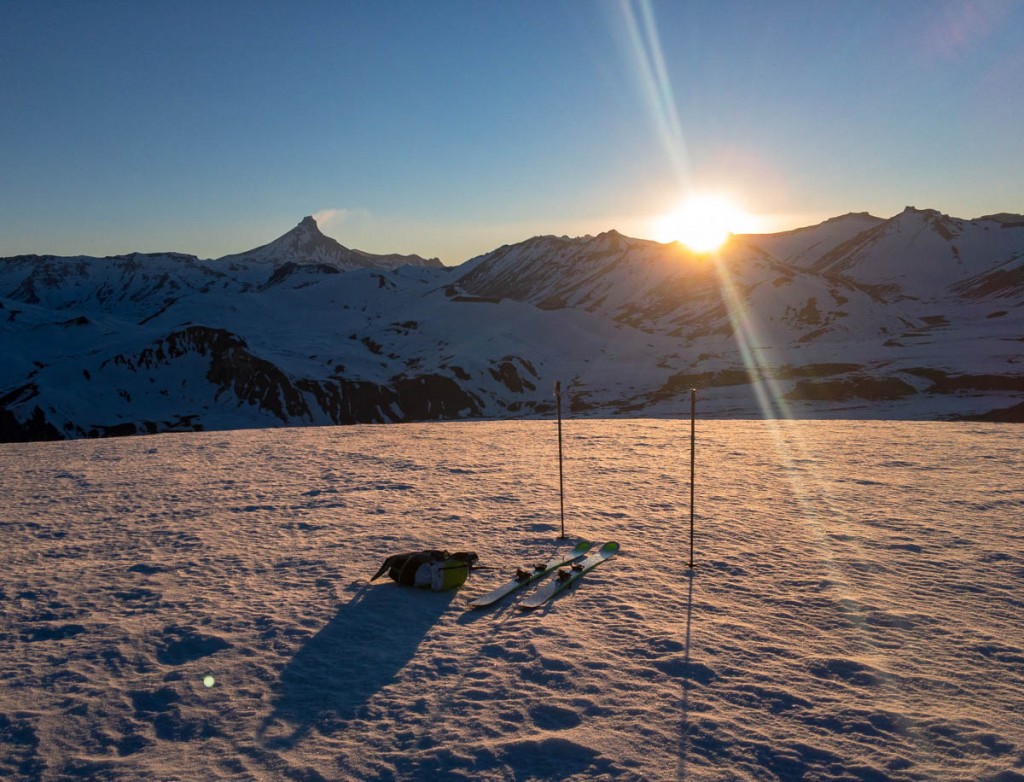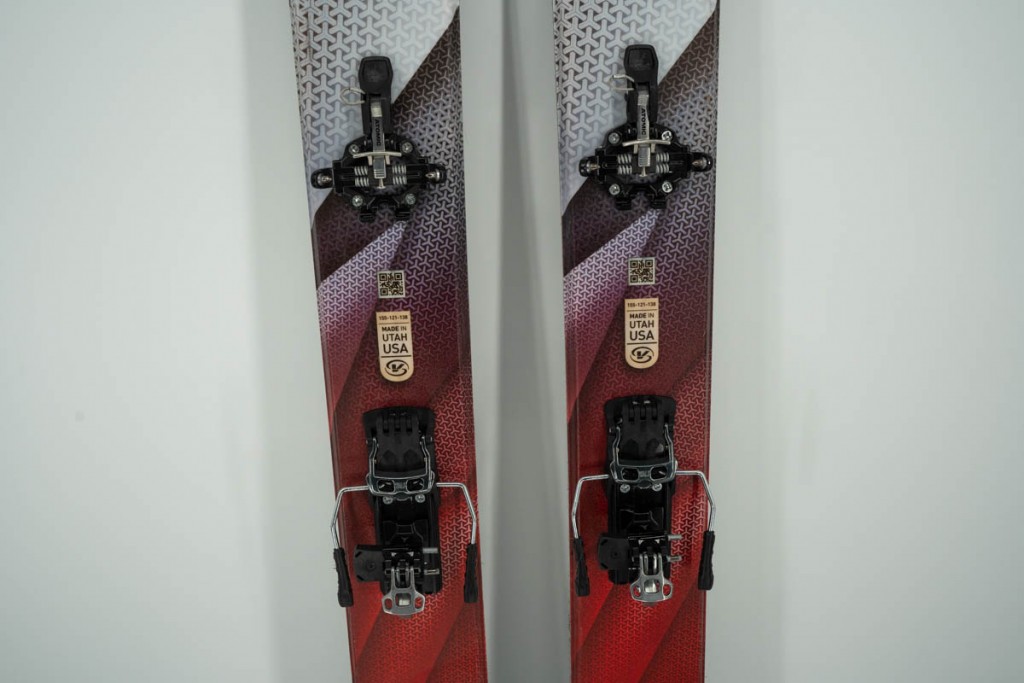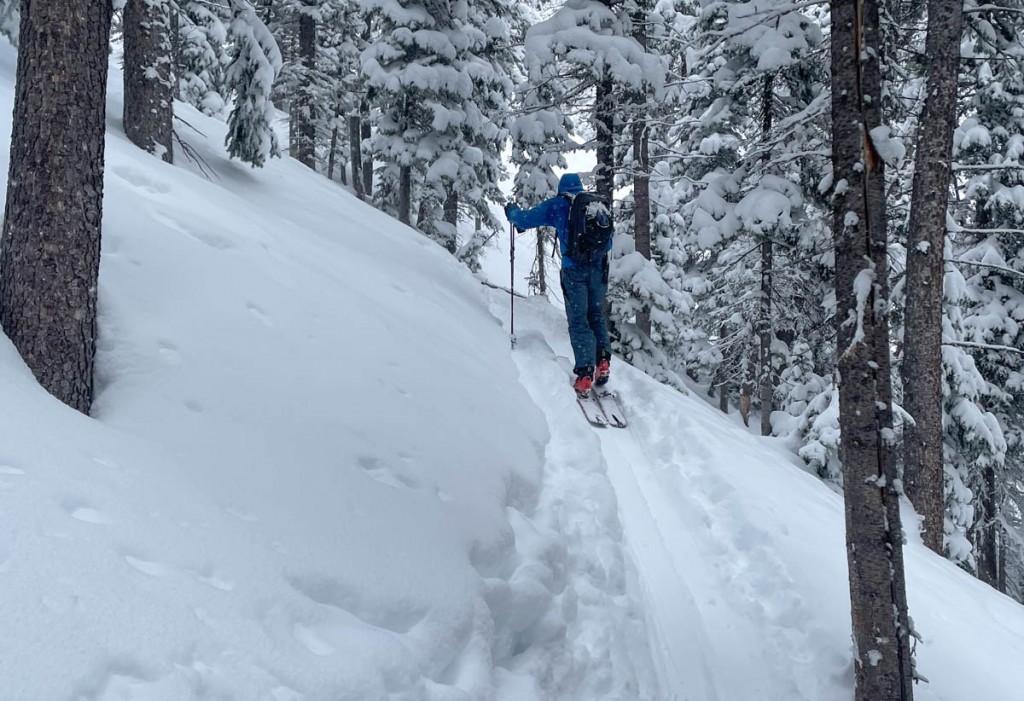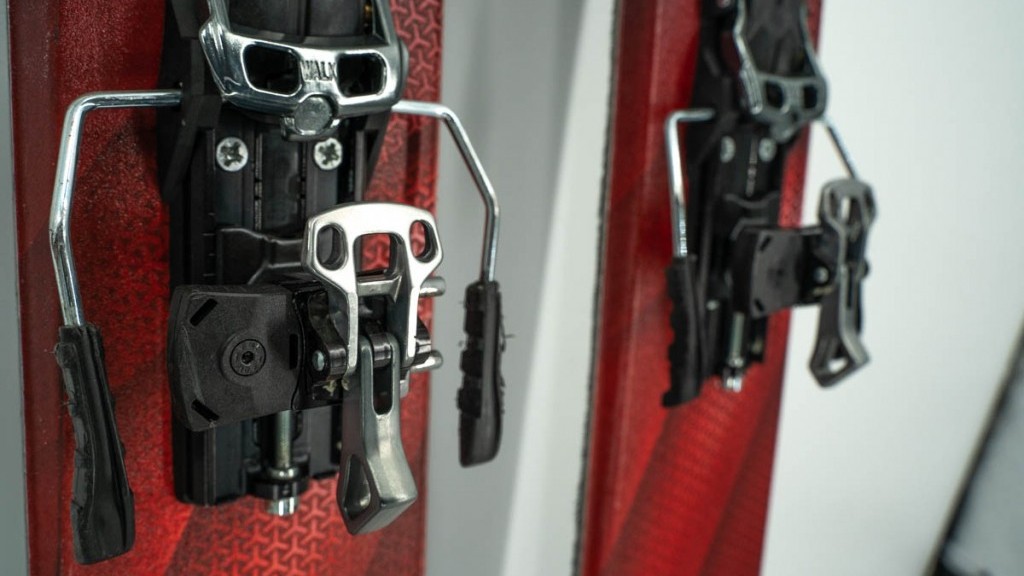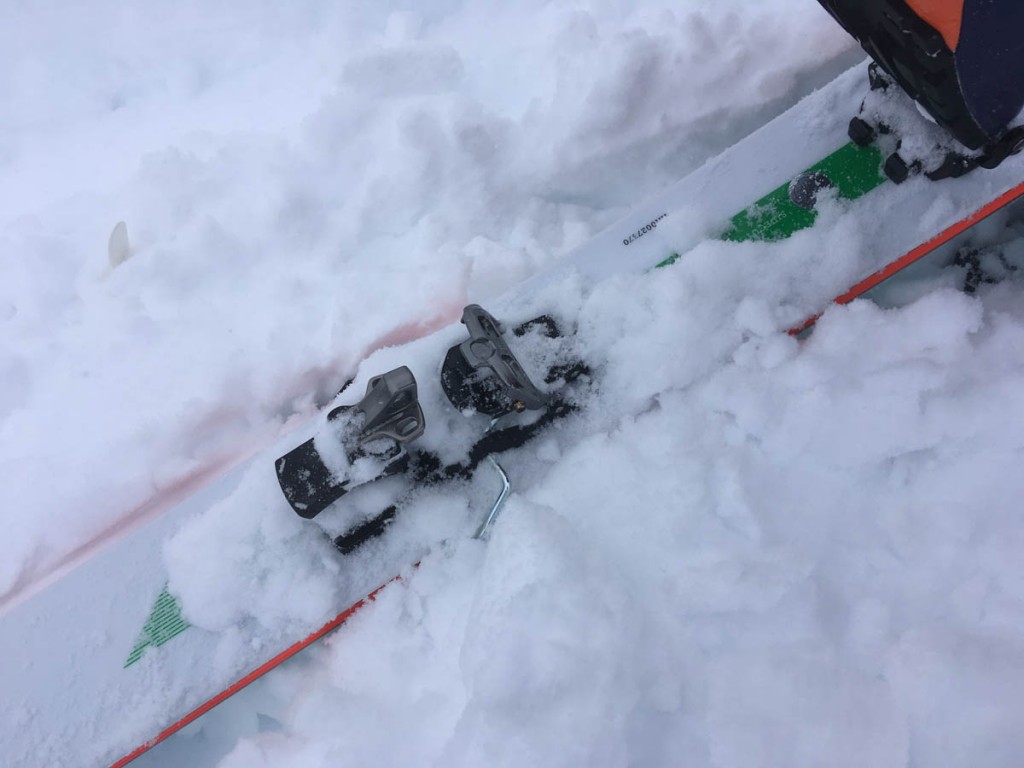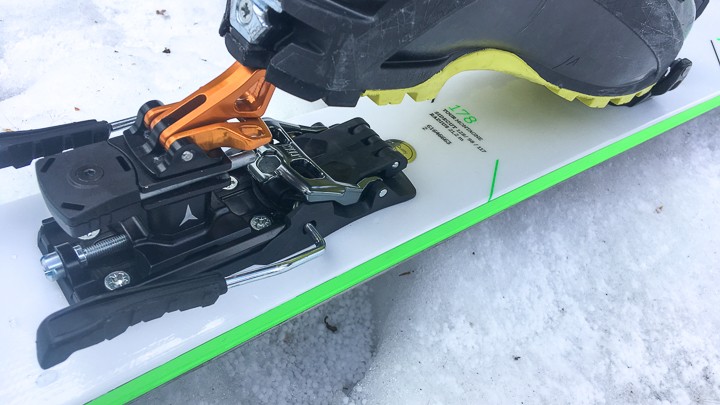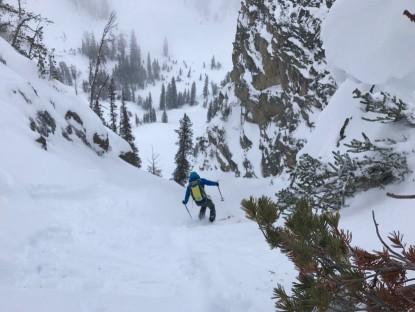Atomic issued a recall for several of their Backland bindings, including the Backland Tour we tested here. The recall pertains to toe components breaking on bindings manufactured between May 1, 2022 and March 31, 2023.
Please visit Atomic's Safety Notice page for information on this recall and what to do if you own a pair of these bindings.Our Verdict
Compare to Similar Products
 This Product
Atomic Backland Tour | |||||
|---|---|---|---|---|---|
| Awards | The Best Overall AT Binding | The Other Best Binding | Best Ultralight Touring Binding | Best Bang for the Buck | |
| Price | $599.95 at Amazon Compare at 2 sellers | $699.95 at Evo Compare at 3 sellers | $599.95 at Evo Compare at 2 sellers | $650 List $519.96 at Amazon | $280 List $279.95 at Amazon |
Overall Score  |
|||||
| Star Rating | |||||
| Bottom Line | If you truly need more performance features than this lightweight binding provides, you fall into a tiny sliver of skiers at the hard-charging end of the spectrum | A high-performance tech binding that incorporates every top-of-the-line feature at a very reasonable weight | This binding has a carefully tailored selection of the features you need while keeping weight to a minimum. The result is an excellent binding for any backcountry skier | Ultralight bindings with broadly adjustable release values | An affordable tech binding that has seen iterative improvements over the decades, yet remains reliable and highly durable |
| Rating Categories | Atomic Backland Tour | ATK Raider 13 Evo | Salomon MTN Summit... | Dynafit Superlite 150 | Dynafit Speed Turn |
| Weight (35%) | |||||
| Downhill Performance (25%) | |||||
| Touring Performance (20%) | |||||
| Ease of Use (15%) | |||||
| Construction Quality (5%) | |||||
| Specs | Atomic Backland Tour | ATK Raider 13 Evo | Salomon MTN Summit... | Dynafit Superlite 150 | Dynafit Speed Turn |
| Weight (pounds for pair) | 1.70 | 1.75 | 1.86 | 0.79 | 1.61 |
| Release Value Range | Men, "Women", "Expert" | 5 to 13 | 6 to 12 | 4 to 13 | 4 to 10 |
| Brakes? | Optional | Yes | Optional | Optional | No |
| Brake Width Options | 80, 90, 100, 110, 120 mm | 86, 91, 97, 102, 108, 120 mm | 80, 90, 100, 110 mm | 75, 90, 105 mm | N/A |
| Weight of one binding and screws. Lightest possible configuration w/o brakes (in grams) | 286 | 396.5 | 310 | 179 | 364.5 |
| Weight of 2 bindings Multiple options are noted where we have tested multiple options. (in grams) | 770 (572 without brakes) | 793 | 843 (600 without brakes) | 358 (492 with adjustment plate) | 729 |
| Stack height: average of toe and heel pin height (in mm) | 37 | 40 | 38 | 36 | 37.5 |
| Toe/heel delta: difference in height between heel pins and toe pins (in mm) | 10 | 12 | 8 | 10 | 17 |
| Meets ISO/DIN Standard? | No | No | No | No | Yes |
| Ski Crampon compatible? | Yes. "Standard" style. Not all crampons will be cross-compatible | Yes. "Standard" style. Not all crampons will be cross-compatible | Yes. "Standard" style. Not all crampons will be cross-compatible | Yes. "Standard" style. Not all crampons will be cross-compatible | Yes. "Standard" style. Not all crampons will be cross-compatible |
Our Analysis and Test Results
The Backland Tour from Atomic, in its tested configuration (with optional brakes), is nearly the lightest “full function” touring binding we have found. What we consider “full function” is important to enumerate; our deep and strong team of expert backcountry skiers has clear values that inform our preferences. We consider a full-function touring binding to be one that has adjustable release value, three heel levels, adjustment for boot length, and ski brakes. Many potential features don't make this list; however, we are confident that our values reflect those that should be important to most ski tourers. Of paramount importance is weight, and weight is lower with fewer features.
Performance Comparison
Weight
Weight is king for human-powered adventures. Weight matters a great deal to us when it comes to ski bindings. With skis, there is a direct relationship between weight and performance. The weight of a ski is a performance attribute; all else equal, and up to a point, heavier skis ski better. Bindings, though, have no such relationship. Aside from the features they can add, heavier bindings offer no advantage to the human-powered skier. At OutdoorGearLab, we consider very carefully the features that are added to or subtracted from backcountry bindings. For performance, more features are better. For efficiency, fewer features are lighter. We like lightweight, and therefore prefer fewer features than many. As noted above, the Backland has the right selection of features.
The only lighter bindings in our test do not have ski brakes. Our lead tester doesn't use brakes on his skis, but he recognizes their value. The Backland Tour bindings, with the optional brakes, are the exception to his preferences. The brake is light enough and simple enough to change his habits.
Downhill Performance
The Atomic Backland bindings employ a downhill boot retention style and standard that is widely proven to be more than adequate for the vast majority of backcountry skiing and ski mountaineering. A full tech-style binding like this, especially one as simple and light as the Backland Tour, has its limitations, to be sure. The retention is secure and tight but has limited release function and limited “elasticity”. Without diving into it too much, realize that anything that can be skied has been skied on tech bindings just like (or even simpler and lighter than) the Backland. The skiing may be slower than on alpine bindings, but the inherent risks of the backcountry environment requires this conservatism more than the equipment does. No matter what gear you are on, a high-speed crash in the backcountry is a grave matter.
Another consideration in downhill performance is two binding geometrical measures. First is the stack height. All reviewers and manufacturers measure these numbers at least slightly differently. Our protocol allows us to compare all options directly. In our measurements, the Atomic “stack height” is 37mm. The range of stack heights in our test goes from 30-48mm. The Atomic height is relatively low, and this is a good thing. Next, let us look at toe heel delta. The Backland has a relatively average delta. This is a good thing. We measured it at 10mm. The test roster includes bindings with toe heel delta between 3 and 17mm, and the average is 9.6mm.
Tech style bindings have far more in common, in terms of downhill performance, than they have differences. The simple construction and limited release adjustment of the Backland Tour puts it at the bottom of the heap, but it is still fully functional. Regardless of these differences, realize that a full tech style binding is not intended for the burliest and fastest of skiing. It isn't until you “step up” (mainly in weight; at and beyond double the weight) to a hybrid tech/alpine binding that you get real advances in downhill performance. These hybrid bindings are legitimately better in downhill performance, offering more release modes, greater adjustment of release values, and each offering release elasticity that is more similar to resort alpine gear. If you ski hard enough to truly require more downhill performance than the Backland and its colleagues, you also should have a rescue helicopter standing by.
It is important for us to make a note about Atomic's release value nomenclature. In a move that is simultaneously strange, welcome, and difficult-to-interpret, Atomic equips the Backland with adjustable release values in the form of three interchangeable springs. This isn't the strange part. The weird thing is how they label the different retention values and respective springs. They call them “Expert”. “Men”, and “Women”. This leads to many questions and potential jokes. Basically, they could just as easily be called “High”, "Medium", and “Low” retention, in that order. You might wonder, “well, what does that translate to in DIN numbers?”. You're not wrong to wonder, but the answer shouldn't actually matter to you. Without the actual DIN certification (and no lightweight tech bindings have it) any DIN comparison is moot. The release value of all non-DIN bindings requires a process of trial and error, regardless of how the manufacturer labels them. Atomic just happens to be a little less precise, but no less accurate, in their calibration. The labels? That's just weird.
Touring Performance
Touring performance of AT ski bindings is a function of just a couple things. Mainly, we look at heel risers, propensity for icing, and touring lock mode. Having a few heel riser options is beneficial. The Backland Tour has three different levels. The simple construction of this binding minimizes icing. Finally, the toe piece must be locked out for touring.
As compared to the other tech style bindings, the differences are more subtle. Some other heel lifters are superior to those on this binding, mainly because they cover a wider range of options. The lowest level is higher than that on the others, while the highest isn't as high as the others. The only other bindings we tested that are as resistant to icing problems as the ultra simple Backland Tour are the ultralight race style.
Finally, toe piece lock and release must be discussed. Simple bindings like the Backland have toe pieces with two distinct modes; the Backland binding has uphill mode, in which the toe piece is completely locked, and downhill mode. With the toe piece of the Backland in downhill mode, but the heel free, the ski would release, but there is not enough retention for normal function. Essentially, you must tour on the Backland binding with no expectation of release. Some others have toe pieces that can be configured secure enough for touring, but with at least some level of release value in that touring mode. These others are better this way than the Backland.
Ease of Use
Simplicity equals ease of use. Once you are accustomed to the function of the Backland Tour binding, it is straightforward to use. All the modes function as intended, with no “features” you don't need. Stepping in and out is on par with the other products, changing modes is clean and simple, and adjustments are reasonable and clear.
In terms of transitions, again, simplicity reigns. Tens of thousands of accomplished skiers over decades of use on all the continents and mountain ranges prove that this basic form is fantastic. The transition from uphill to down or vice versa is about the same as that which a skimo racer does in mere seconds. The only additional step is the activation or stowage of the Backland brakes. So far, in our years of testing, the brakes stow and deploy predictably and handily. We can't say that about many tech binding brake configurations.
Stepping in and out of the toe piece of tech bindings requires a learning curve, regardless of how the binding is built. That being said, some differences smooth out the process. The Backland is about average in this regard. With practice, this binding transitions almost as easily as any other in the test.
Durability
While the Backland Tour binding is a new product, its technological foundation is decades old. This style of binding has literally billions of vertical feet of testing behind it. We have not yet tested the Backland to failure, but we are 100% confident that it will stand the test of time and mileage.
Like with ease of use, simplicity is durability. The tiny components of the Backland may appear sub-par, but the fact is that they are more than ready for whatever abuse you may dish out. The many moving parts and extensive use of plastic in the bulkier and heavier bindings are, in our experience, more vulnerable to failure than the simple but small components of the Backland Tour.
Should You Buy the Atomic Backland Tour?
The Atomic Backland Tour shakes up the market with its throwback design, executed really well. Atomic markets the Backland as a lightweight ski touring binding. We recommend it as an all-around ski touring binding. This is an important distinction and represents what we hope will be a sea change in the market, led by consumers and opinion leaders demanding lighter and simpler equipment that is carefully engineered and executed. If you are average to well above average in your ski touring and ski mountaineering pace and style, you will only appreciate the balance of attributes in the Atomic Backland. Only those that could appear in ski movies might wish for greater downhill performance from their ski bindings.
What Other Backcountry Ski Bindings Should You Consider?
Considering its overall performance, we consider the Atomic Backland Tour to be a great value. But it is worth pointing out that there are many other options that perform similarly, and may only omit ski brakes. Namely, the Dynafit Speed Turn is more than half the price of the Backland Tour, and in many ways performs nearly just as well.


